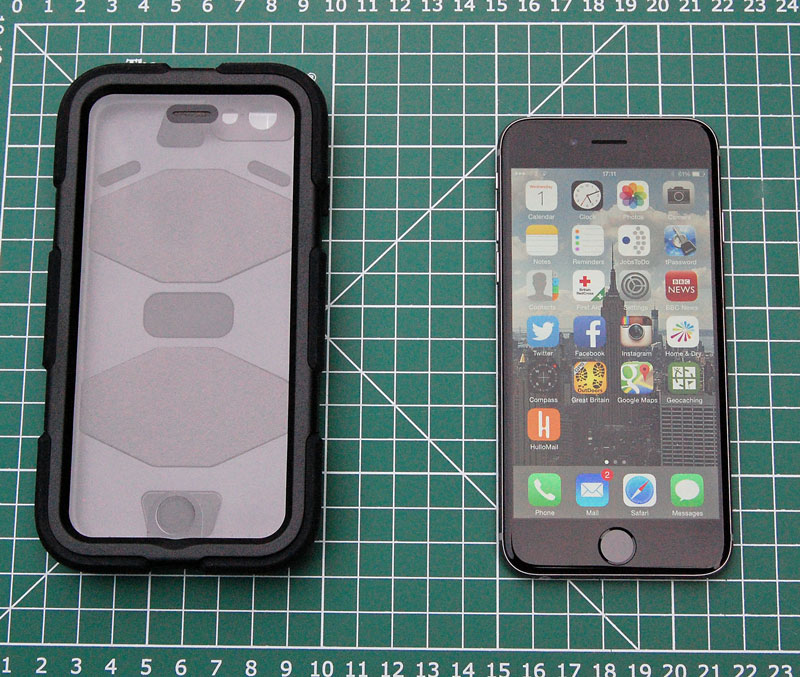There is no way I would risk taking my iPhone 6 out in the countryside (or the urban jungle for that matter) without protecting it. When I go geocaching I mostly use my Garmin Dakota, principally because it will withstand being dropped into a muddy puddle – or of course just dropped! I do take my iPhone geocaching as well, mostly for detailed mapping or to look stuff up on the internet, but I’m always concerned for its safety, hence the need for a robust case.
For the last 2 years I’d used an Otterbox Defender with my iPhone 5 which protected it well enough but using it daily for such an extended period was bound to show up any flaws. Fortunately there aren’t many.
The Defender was a 3-part case which I found fiddly and time consuming to assemble and even longer to take apart when I wanted to remove my iPhone from the case. While most of the key ports and switches were covered, the home button, ear piece, speaker and microphones were all open to the elements and definitely not water resistant. Also, over time, the case let in dust (not a lot but enough to be annoying).
When I got my iPhone 6 I decided to see what other rugged cases were out there as an alternative. After a bit of research I decided against getting a new Otterbox Defender and I went instead for the Griffin Survivor All-Terrain case. First impressions are favourable, although inevitably with a case offering this much protection, it is a bit bulky.

Here it is next to my iPhone 6. As you can see from this image, the whole screen, the front camera and the Touch ID sensor/Home button are covered by the protective front but once one adds the dimensions of the surrounding impact protection, the case has become quite big. Of course, the iPhone 6 is bigger than my old iPhone 5 so it was inevitable that the case would be larger too, nevertheless, it is not so big that it becomes cumbersome.
It has some great features which, for me, put it ahead of the Defender. The iPhone 6 is a snug fit in the body of the case and is easy to insert or remove. In addition to having all the usual ports covered against water and dust, the microphones and speakers are also protected by a sort of membrane; Griffin say the case is rain-resistant that’s good enough for me as I would’t expect true waterproofing for the price. The only trouble I’ve encountered so far is operating the Touch ID with the case on – sometimes it doesn’t seem to read my fingerprint whereas at other times it does and unlocks without problems. However all other aspects of the iPhone operate as if the case wasn’t there so it’s a minor inconvenience which I’m not too bothered about.
This case is an excellent choice for me when I’m out and about, whether I’m geocaching or just walking Skye. I’ll also feel happier using my iPhone when I’m urban caching, especially in London and similar places where walking around with an expensive smartphone in one’s hand can be a risky activity. 🙂

I need to look into something like this. I solely use my phone to cache but with my crappy old 4s the odd drop and a bit of rain didn’t matter. My new 6 however I think I need to look after a little better! 😉
Absolutely! And if you want the ultimate in protection take a look at the “life proof fre” over at http://www.lifeproof.com.
I bought a
Hmmm comment weirdness there. Shar bought me a Griffin Survivor for my iphone 4 3 years ago and I have now just started using it on my 4s. Whilst the rubber plugs that fill the charging socket and headphone socket etc have now gone, they probably lasted a couple of years… I am an incesent fiddler… the case itself is still structurally sound. The only thing I don’t like is that because it is rubber the phone never seems to be easy to get in and out of my pocket, but then that can be an advantage to as it means it doesn’t slip out.
The rubber/silicone outer on my Defender was getting a bit loose after a couple of years but it was otherwise intact. It will be interesting to see how the new Survivor holds up.